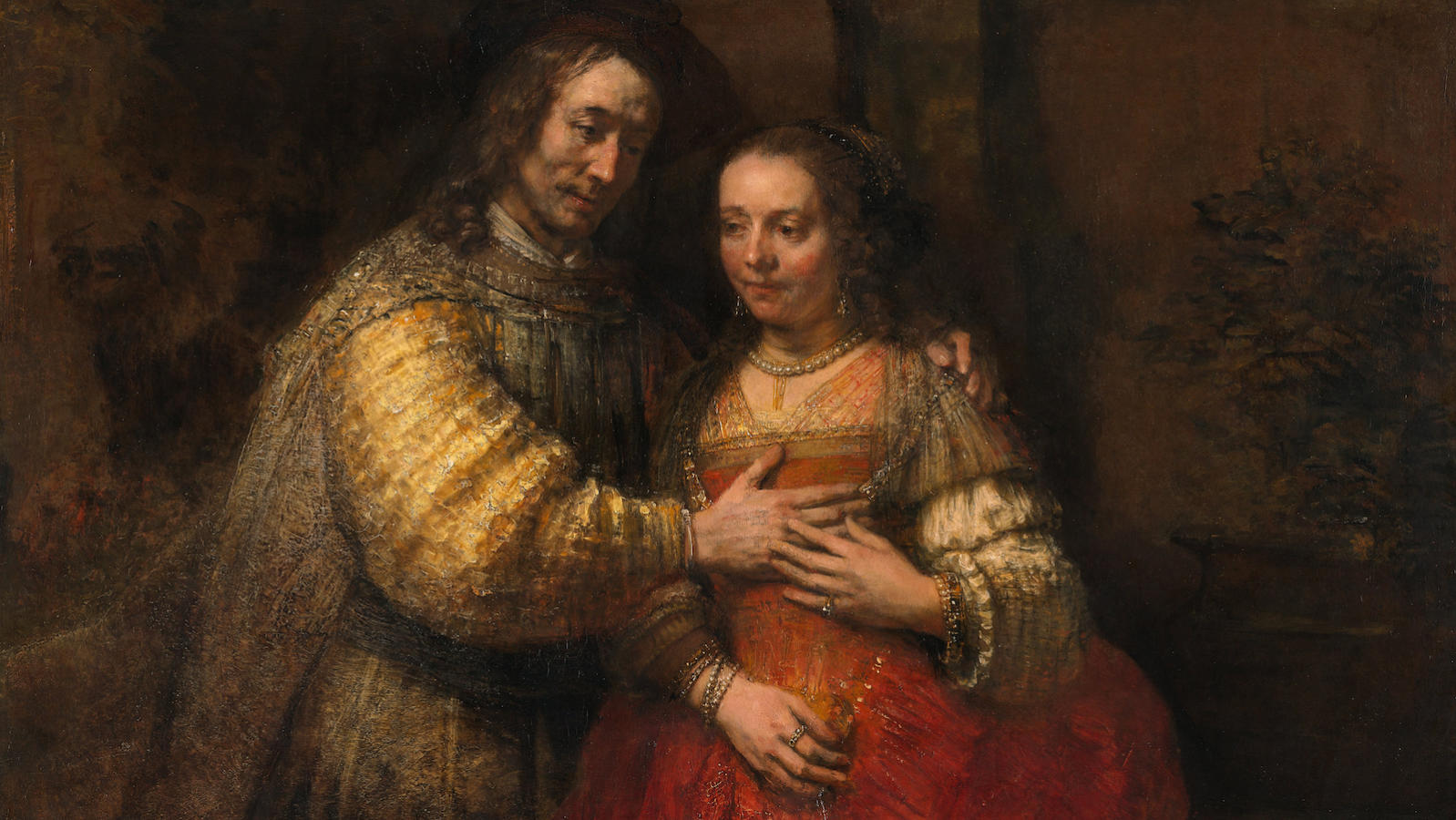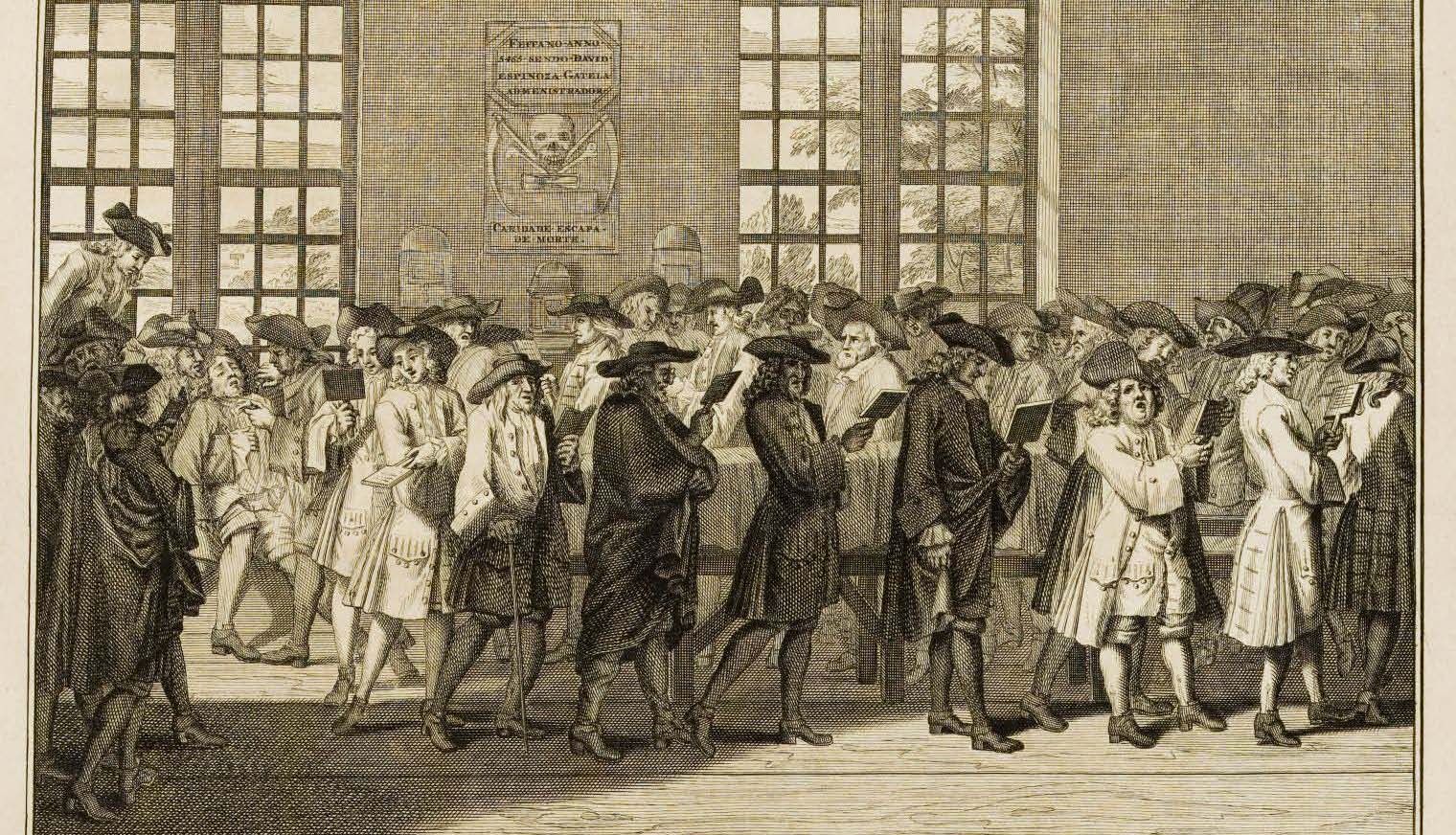In 1492, Spain expelled its Jewish population. The sizable Jewish community was given three months to liquidate its property and leave. Two places offered immediate relief: Portugal and the Ottoman Empire. However, as the political situation across Europe shifted, new opportunities for Jewish settlement materialized, particularly Holland, which emerged from the 80 year Wars of Spanish Succession as an independent nation in 1648.
The Dutch: Tolerant Traders
Dutch principles of religious toleration were born out of the exigencies of warfare and the need to establish peace among her religiously heterogeneous population. New Christian skills and contacts were welcomed during the protracted warfare with Spain. Article XIII of the Treaty of Utrecht, which ratified the union of the northern provinces, declared that no one was to be prosecuted for his religious beliefs. Although this clause was intended to benefit the Protestants and keep peace among Christians, it provided the legal basis upon which Jews immediately began to take up residence and seek recognition in Holland. There the Sephardim would find the ideal conditions to create a New Jerusalem.
The Dutch capital was the emporium of 17th-century Europe, her harbor teeming with ships brimful of goods from the Americas and the Far East. Her people eagerly invented themselves as a new nation; beguiled by commerce and its possibilities, they were nonetheless characterized by sobriety of behavior and distaste for both superstition and any pretension of nobility. The city’s great wealth was based on three factors: her fleet, her thriving trade, and a policy of tolerance that attracted some of the most enterprising and ambitious souls on the Continent….
Amsterdam: A New Jerusalem
In this newfound mercantilism, marranos [crypto-Jews; Jews who converted to Christianity but continued to practice Judaism in secret] became especially prominent. In 1604 a certain Manuel Rodrigues de Vega petitioned the city’s burgomasters to be allowed to establish silk mills there along with two other Portuguese Jews. In short order, the Sephardim would develop not only the domestic silk industry but also the silk trade, much of the tobacco trade, and commerce in sugar, corals and diamonds. Eventually, Sephardic poets, dramatists, calligraphers and copper-etchers would also be found alongside the customary merchants, bankers, and physicians.
Now that it seemed the Jew could finally cease their wanderings, they began to pour into Holland from Spain, Italy, Portugal, Germany and Antwerp. At first, religious services were held inconspicuously in private homes as well as the residence of Samuel Pallache, a Sephardic Jew who was Morocco’s ambassador to the Netherlands from 1612 to 1616.
To a certain extent, the position of the Jews was regularized in 1597 when burghers’ rights were granted to members of the “Portuguese nation” in Amsterdam. It was not until 1606 that one finds the first official reference to Joodche Gemeente (the Jewish congregation), but by 1609 the Sephardic community numbered 200 souls and supported two synagogues. A decade after, a third house of worship would be founded….
Jews Fascinated Their Dutch Neighbors

Ironically, it became better to be known in Amsterdam as a Jew than as a “Portuguese merchant,” thanks to anti-Iberian sentiment after the breakaway from Spain. Many Dutch intellectuals became fascinated with the somewhat exotic inhabitants of the Jewish quarter and sought them out for conversation.
At the outset of his career, Rembrandt, young and unknown, sketched many of his Portuguese neighbors, including Menasseh ben Israel [eminent rabbi and scholar; who petitioned Oliver Cromwell for the readmission of the Jews to England in 1655-6]. Conversely, the Sephardic Jews reaped the benefits of the lively intellectual life created by Amsterdam’s savants, who eagerly cultivated theology, philosophy, jurisprudence, mathematics and oriental languages.
The Jewish Printing Capital of Europe
In 1617,the heads of the Jewish school voted to establish a printing press. Within the decade, several private Hebrew presses were also set up including that operated by the renowned intellectual Menasseh ben Israel. During its first twenty years, his multilingual press produced more than sixty titles, including Bibles, prayerbooks, and his own original works. Well known among the philosophers, scientists, and theologians of Amsterdam, he gave sermons that attracted flocks of Christians as well as Jews, and would even represent his enterprise at the Frankfurt Book Fair in 1634. By this time, since Hebrew printing had decayed in Venice, Amsterdam was effectively the Judaic printing capital of Europe…
Lisbon on the Amstel
Meanwhile, in contrast with the Sephardim in the Ottoman Empire, the Portuguese Jews of Amsterdam remained deeply immersed in Spanish and Lusitanian high culture as it evolved in the sixteenth and seventeenth centuries. While the Ottoman Sephardim distinguished themselves by continuing to use medieval Spanish in everyday speech, writing this Ladino in Hebrew characters and incorporating Hebrew words and expressions, the Amsterdam Sephardim used the living Spanish or Portuguese of his day, constantly changing linguistically and written with Roman characters.
In fact, the culture of the Portuguese Jewish émigrés bore so few traces of the traditional Hebrew spirit that most of its members knew no Hebrew at all when they arrived in Amsterdam. They had to be laboriously schooled as adults by the community’s tutors and rabbis. As surviving lists of private book collections show, they continued their interest in Iberian literature, which was a main source of their shared community pride. They created something of a miniature Lisbon or Madrid on the banks of the Amstel, on Jodenbreestraat, populated by poets and dramatists writing in Spanish and Portuguese as well as men resembling Jewish hidalgos (Spanish noblemen of a lower rank), who preserved the manners of the nobility and retained their solidarity with other Iberian Jews.
For all of their sophistication and pride in their secular heritage, however, most continued to harbor well-founded fears of the Inquisition. Even in Amsterdam, Sephardic Jews used aliases in business, if only to protect relatives and business associates who had remained behind in Iberia.
Reprinted with permission from The Jews of Spain: A History of the Sephardic Experience (The Free Press).
<!–Jane S. Gerber is a Professor of History at City University of New York. Her book, The Jews of Spain: A History of the Sephardic Experience, won the 1993 National Jewish Book Award for Sephardic Studies.
–>
Sephardic
Pronounced: seh-FAR-dik, Origin: Hebrew, describing Jews descending from the Jews of Spain.



